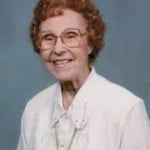Past Life Therapy. Contrasting Perspectives with Traditional Psychotherapy – Dianne Seaman Poitier (Is.31)
 Abstract
Abstract
A hypothesis—there are often past life roots to present life psychological patterns.
Belief systems influence the filter through which behavior is interpreted. Regression therapy challenges several longstanding paradigms in traditional psychology. Based on a one lifetime only viewpoint, the assumption is made that the roots of behavior either stem from childhood or are a result of biochemical imbalances. The more traditional model also tends to see the unconscious as layered more linearly, with the earliest memories being the deepest and therefore hardest to access. These four past life cases present contrasting interpretations based on such belief systems models.
The ongoing debate on this subject tends to categorize opinion into two opposing camps. Most popular with … Read the rest

 Abstract
Abstract
